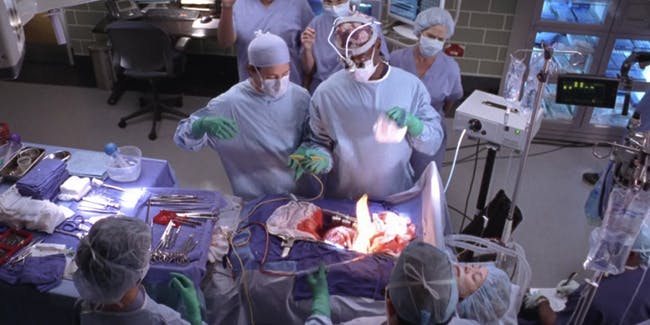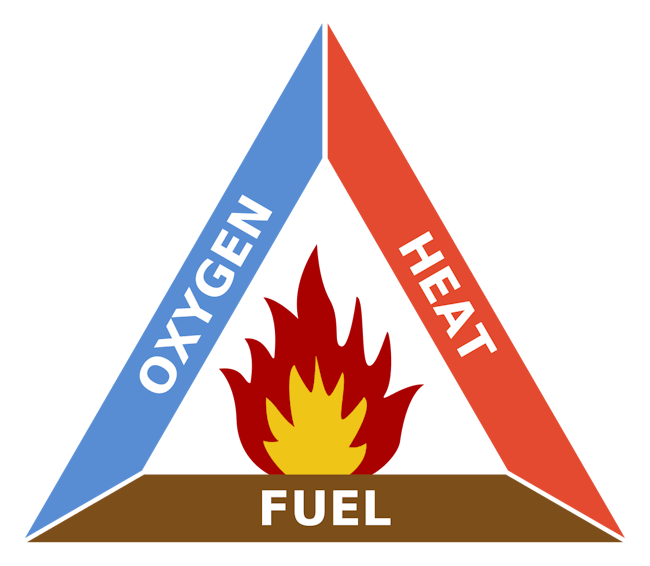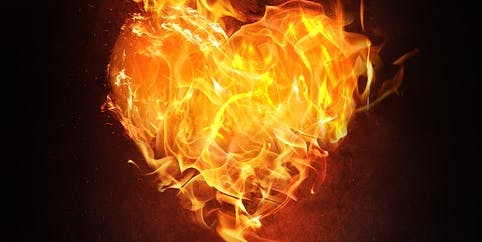It just takes three elements to make a fire.
Complications like infections or perforations can arise in the operating room, but one man had a much closer brush with disaster, as doctors reported at the European Society of Anesthesiology’s conference. During heart surgery, a fire flared up in his open chest cavity. This rare occurrence, one of his doctors tells Inverse, was the result of a very unique combination of circumstances. But despite the rarity of the occurrence, she fears it may become more common.
Dr. Ruth Shaylor, the anesthesiologist at Tel-Aviv Medical Center in Israel and Austin Health in Melbourne, Australia who presented the case study, says the strange event began when a 60-year-old man needed emergency heart surgery at Austin Health. He was quickly under anesthesia to repair an aortic dissection, a tear in the lining of the massive blood vessel that carries blood from the heart to the rest of the body. Due to a chronic lung condition, the surgery required extra care.
“The patient had severe COPD” — chronic obstructive pulmonary disease — “which causes bullae (large air filled sacs) to form in the lungs,” Shaylor tells Inverse. “One of these had stuck to his sternum” — the breast bone, which doctors had to crack open to access the heart.
“Despite being very careful during the operation, these bullae are very fragile, and one of them burst,” she says.

The doctors jumped into action. To minimize the patient’s risk of respiratory distress, they increased the flow of anesthetic gas and cranked up his supplemental oxygen saturation to 100 percent.
Smokey Bear, the famous icon of forest fire prevention, tells us that it takes three essential elements to start a fire: oxygen, heat, and fuel.
Pure oxygen, like the kind that pumped through the patient’s lungs and out through burst bullae, is extremely combustible.
During surgery, the doctors used a common tool called an electrocautery pen, an electronic device that generates high heat using an electrical current and is used to cauterize small wounds to quickly stop bleeding.
Fuel, the third ingredient, came in the form of dry surgical packs. These simple items are dry pieces of gauze that surgeons use to either absorb bodily fluids or hold tissues out of the way during surgery.
The combination of oxygen, heat, and fuel quickly turned into a small blaze inside the man’s open chest cavity, with the dry surgical packs igniting in conjunction with the pure oxygen and hot electrocautery device.

Shaylon reports that she and her fellow doctors quickly doused the flames with saline solution and checked for tissue damage. “There wasn’t any,” she says. The rest of the surgery went off without a hitch, and the patient was successfully treated for his aortic dissection.
It was a close call, but for Shaylon it highlights a couple of key points. First of all, she notes that fires in the operating room have been reported seven previous times in the medical literature. In all seven cases, surgeons were using dry surgical packs. And five out of the seven pervious cases “also involved patients with COPD, and the remaining two involved other lung diseases,” increasing the risk of leaking oxygen.
Surgeons should be aware of these risks, she emphasizes, pointing out that these incidents could start happening more often because the circumstances are so common.
In case you were wondering, Shaylon says the whole event was over too quickly for the doctors to snap any photos.
“Unfortunately this was an emergency operation,” she says, “and we were too busy dealing with the fire and checking for damage to take pictures.”
(For the source of this, and many other interesting articles, please visit: https://www.inverse.com/article/56309-cardiovascular-surgery-fire-in-the-hole/)









